Welcoming plants into your home can transform any space into a lush sanctuary, but it’s essential to ensure that your indoor garden is a safe haven for both your plants and your furry companions. Whether you’re a seasoned green thumb or just starting your gardening journey, choosing pet-friendly plants is crucial in creating a harmonious balance between your love for nature and the well-being of your pets.
For those new to the world of gardening, the thought of selecting safe plants might seem daunting, but fear not—this guide will illuminate some delightful options that are both beautiful and non-toxic. Experienced gardeners, too, will find this exploration of plant choices a fresh opportunity to expand their collection without compromising their pets’ safety.
In the following sections, you’ll discover a variety of plants that not only brighten your home but also pose no threat to your beloved animals. From vibrant foliage to flowering beauties, this article will equip you with the knowledge to make informed, confident choices. By the end of this read, you’ll feel empowered to cultivate a pet-friendly oasis that’s both nurturing and aesthetically pleasing.
Understanding Pet-Safe Plant Benefits
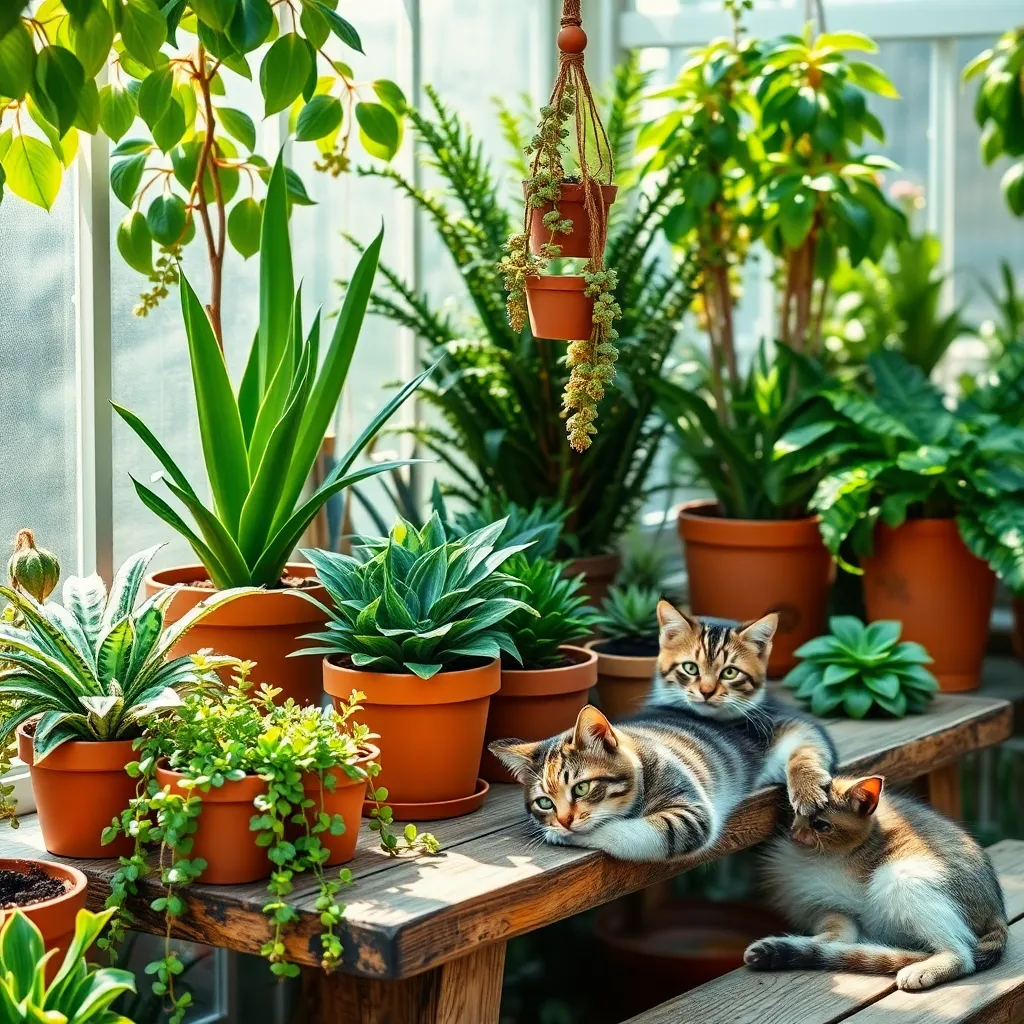
Pet-safe plants are invaluable for creating a harmonious home environment where both your beloved plants and animals can thrive. These plants not only add beauty and freshness to your space but also ensure that if your pets decide to nibble, they remain unharmed.
Choosing the right pet-safe plants involves understanding their specific needs and care requirements. For example, spider plants are excellent choices due to their resilience and minimal care needs; they thrive in indirect sunlight and require watering only when the top inch of soil is dry.
In addition to being safe, many of these plants also offer air-purifying benefits, which can improve the overall quality of your home’s environment. The Boston fern, a non-toxic plant for pets, is particularly effective at removing toxins and prefers humid conditions, so misting regularly can enhance its health.
For more seasoned gardeners looking to expand their collection, incorporating a variety of pet-safe plants can create a lush indoor garden that caters to different light and moisture preferences. Consider pairing low-light plants like calatheas with sun-loving options such as the areca palm to diversify your indoor ecosystem while keeping your pets safe.
Top Non-Toxic Plants for Pets
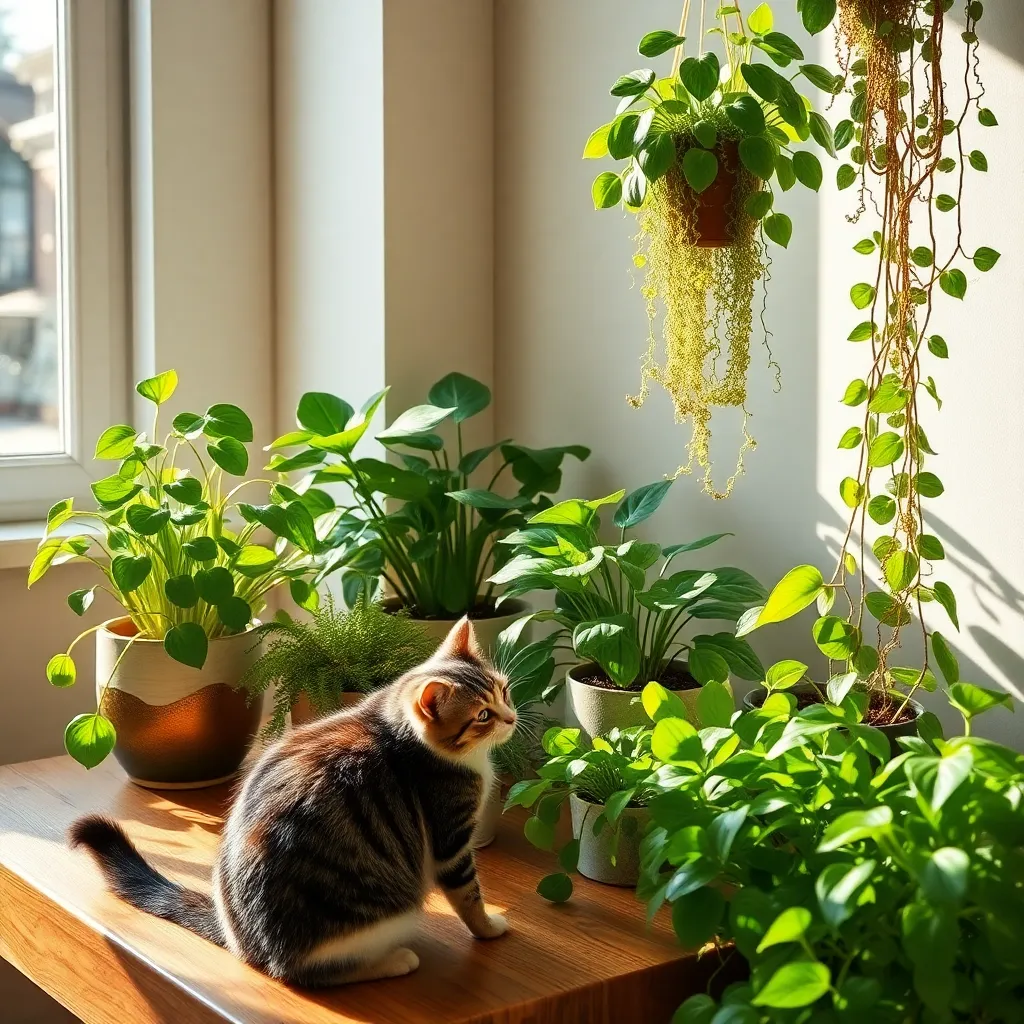
When selecting non-toxic plants for your home, consider the beloved Spider Plant (Chlorophytum comosum). This resilient plant thrives in indirect sunlight and prefers a well-draining potting mix, making it a perfect choice for beginners.
Another excellent option is the Bamboo Palm (Chamaedorea seifrizii), which adds a tropical vibe to your indoor space. It appreciates high humidity and requires regular watering to keep its soil consistently moist but not soggy.
The Boston Fern (Nephrolepis exaltata) is a pet-friendly option that can also improve air quality. It flourishes in a humid environment and benefits from being misted regularly, especially during dry spells.
If you’re looking for something colorful, consider the Areca Palm (Dypsis lutescens). It grows best in bright, indirect light and prefers a peat-based potting mix with good drainage to prevent root rot.
For advanced gardeners, the Calathea, known for its stunning foliage, is a rewarding choice. Although it requires a bit more attention, keeping it in a warm spot with indirect light and maintaining humidity with regular misting will ensure its vibrant leaves stay lush and healthy.
Finally, the Prayer Plant (Maranta leuconeura) is a captivating, pet-safe plant known for its unique leaf movements. It thrives in well-drained soil and should be kept evenly moist, making it a delightful and interactive plant for any home.
Creating a Pet-Friendly Plant Space
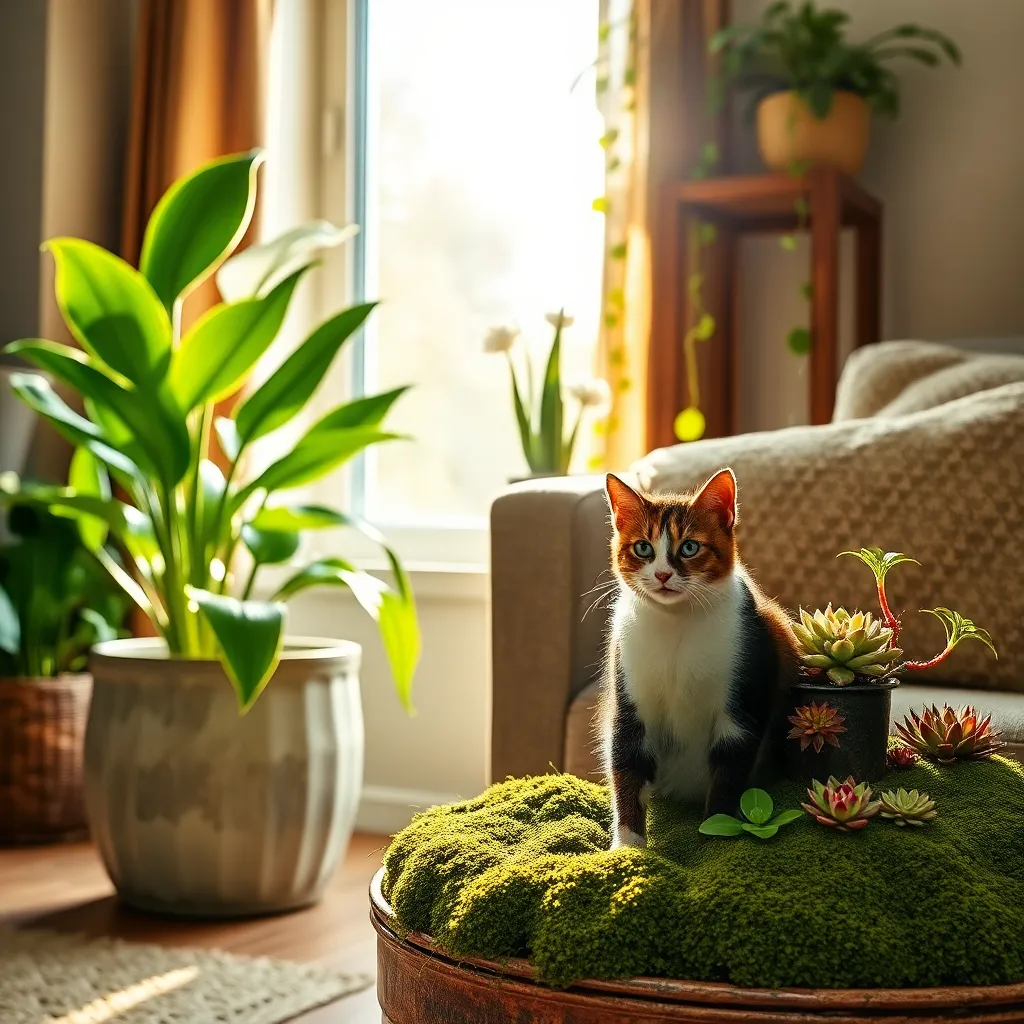
To create a pet-friendly plant space, start by selecting an area that balances your plants’ needs with your pets’ safety. Choose a spot with ample indirect sunlight, as this will suit many non-toxic plants like the Spider Plant and Bamboo Palm, which thrive in bright, filtered light.
Next, ensure the soil is suitable for the plants you choose by using a high-quality potting mix that provides good drainage. For instance, a mix containing peat, pine bark, and perlite can enhance soil aeration, which is particularly beneficial for plants like the Boston Fern.
Consider using raised plant stands or hanging baskets to keep plants out of reach of curious pets, reducing the risk of accidental ingestion. This setup not only protects your plants but also adds an aesthetic vertical element to your garden space.
Incorporate safe, natural deterrents like citrus peels around the base of plants to discourage pets from digging into pots. If you have a particularly adventurous pet, using a gentle mist of vinegar and water on the plant’s outer leaves can also serve as an effective deterrent without harming the plant.
Care Tips for Pet-Safe Plants
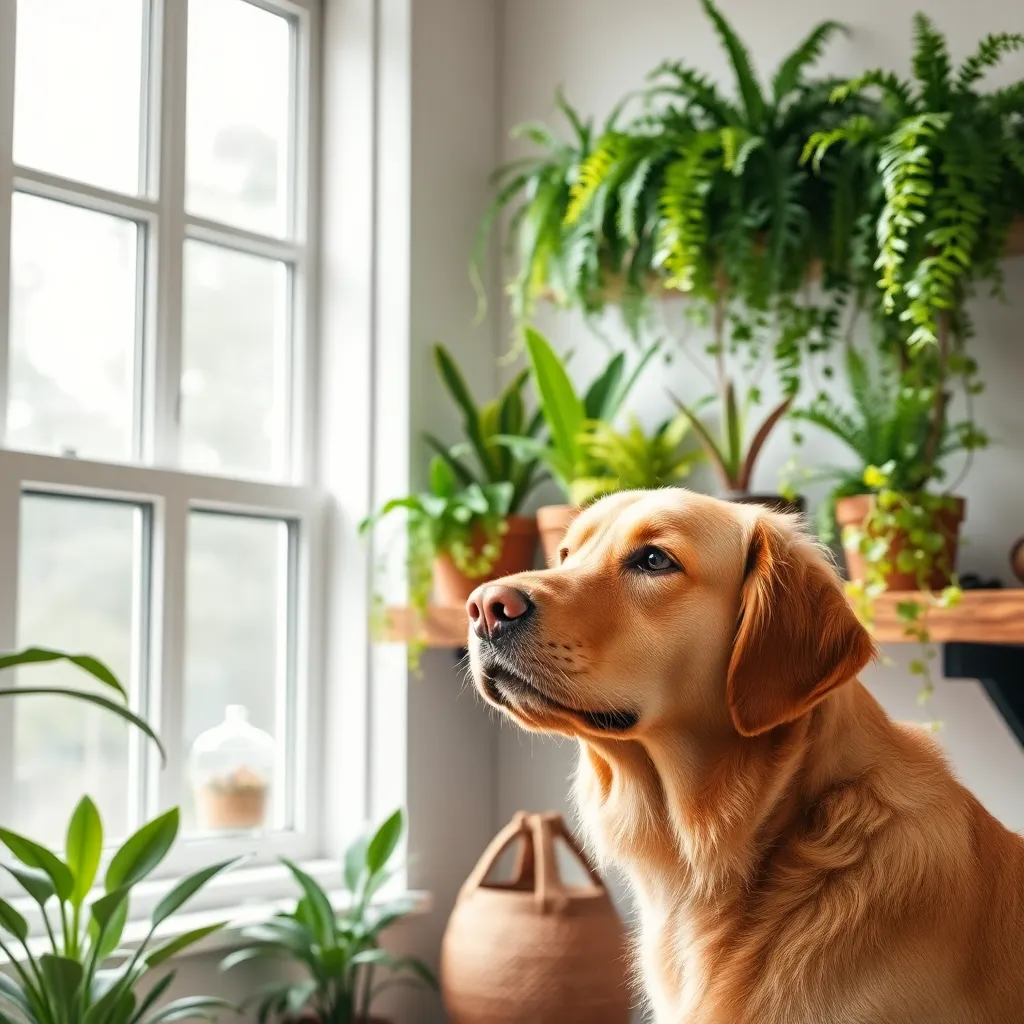
When caring for pet-safe plants, it’s essential to consider their specific light requirements. Most pet-friendly plants like Spider Plants and Bamboo Palm thrive in indirect sunlight, making them ideal for indoor spaces.
Watering your plants correctly is another crucial aspect of plant care. For many pet-safe options, such as Boston Ferns, maintaining consistently moist soil is key, but be cautious not to overwater, as this can lead to root rot.
Soil quality can greatly impact plant health, so opt for a well-draining potting mix. You can improve drainage by adding perlite or coarse sand to the soil, especially for plants like Areca Palms, which prefer slightly acidic to neutral pH levels.
Fertilization should be done sparingly to avoid harming your plants. Use a balanced liquid fertilizer during the growing season, typically every four to six weeks, to support their growth and vitality.
Regularly pruning your plants can enhance their appearance and promote healthy growth. Trim dead or yellowing leaves from Peace Lilies to encourage new growth and maintain their lush, vibrant look.
For advanced care, consider the humidity needs of your plants, especially if you live in a dry climate. Mist plants like Calathea regularly or place a humidifier nearby to create a more suitable environment.
Repotting is sometimes necessary to ensure your plants have enough room to grow. Watch for signs like roots emerging from drainage holes, which indicate it’s time to move your plant to a larger pot, providing ample space for root expansion.
Avoiding Harmful Plant Varieties
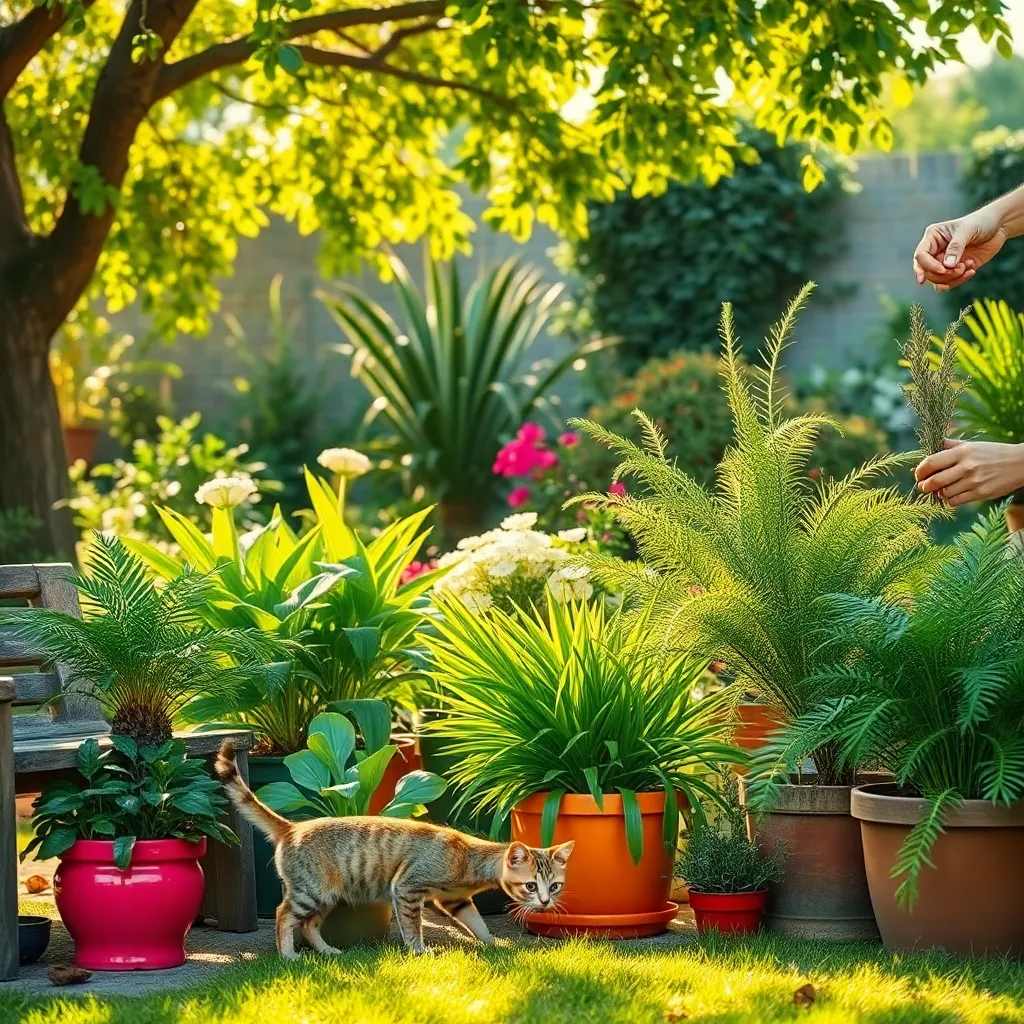
When creating a pet-friendly garden, it’s crucial to avoid plant varieties that can be harmful to animals. Some common plants, like lilies and daffodils, can be toxic to pets if ingested, so it’s best to steer clear of these when designing your garden.
Researching plant toxicity can help you make informed decisions about what to include in your garden. The ASPCA offers a comprehensive list of both toxic and non-toxic plants, which can be a valuable resource when selecting pet-safe varieties.
Consider replacing harmful plants with pet-friendly alternatives that offer similar aesthetic appeal. For instance, instead of planting lilies, opt for colorful and safe begonias or snapdragons, which are non-toxic to pets and thrive in similar conditions.
For gardeners seeking to create a lush environment without risking pet safety, soil and watering considerations play a significant role. Ensure your chosen plants are compatible with your native soil type and adjust watering schedules to meet their specific needs, typically maintaining moist but not waterlogged soil for most pet-safe varieties.
Advanced gardeners might explore using raised beds or containers to further control the growing environment. This approach not only helps in maintaining the health of pet-friendly plants but also allows for easy relocation if needed, offering flexibility and safety for your pets.
Conclusion: Growing Success with These Plants
In nurturing both your relationships and your home, understanding the impact of your environment is key. This article highlighted five essential concepts: choosing non-toxic plants to protect your furry friends, enhancing home harmony with greenery, fostering shared responsibility in plant care, creating a calming atmosphere conducive to strong bonds, and using plant care as a metaphor for nurturing your relationships. By integrating pet-friendly plants into your living space, you are taking a significant step toward a safer, more harmonious home life.
As your next actionable step, consider visiting a local nursery or researching online to find the perfect pet-friendly plants that suit your taste and lifestyle. Remember, the small act of bringing a plant into your home can cultivate a thriving environment for both your relationships and your pets.
Bookmark this article now to keep these vital insights at your fingertips. By doing so, you’ll have a handy guide to refer back to as you continue to build a loving, safe space for everyone in your household. Moving forward, embrace the journey of growing together, knowing that with intentionality and care, your relationships can flourish just like the plants you nurture.
